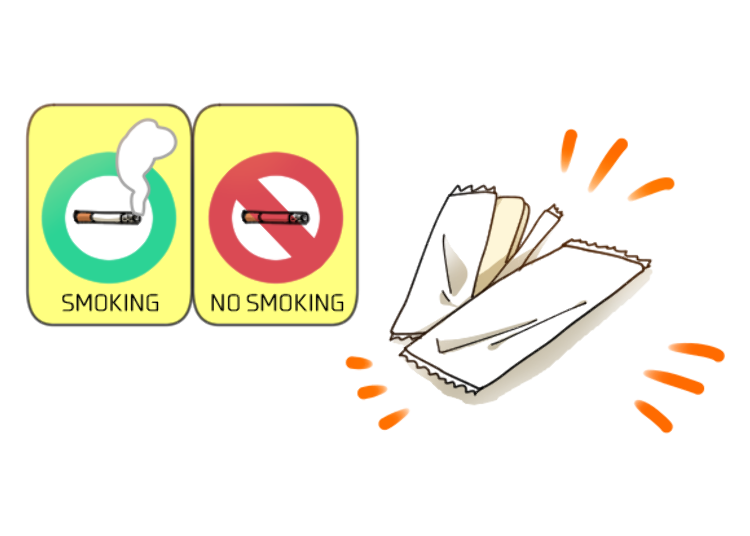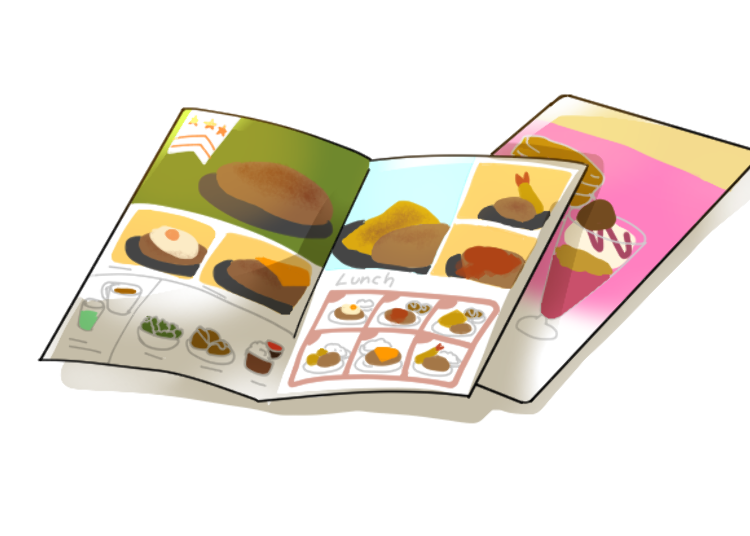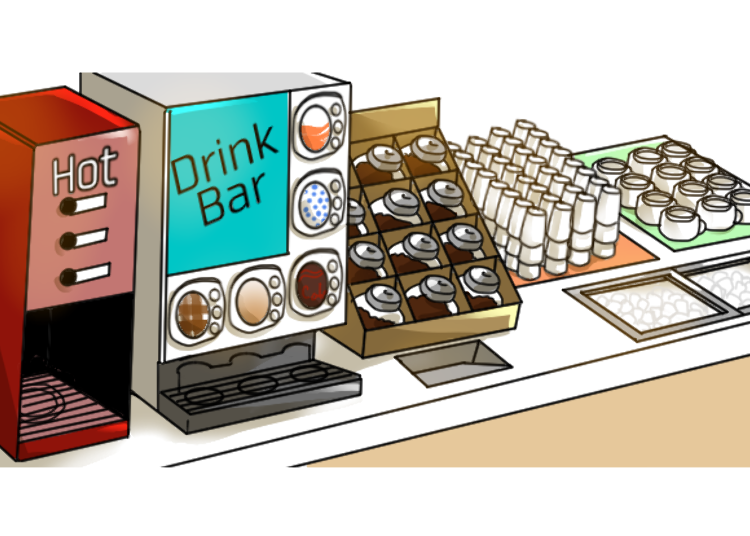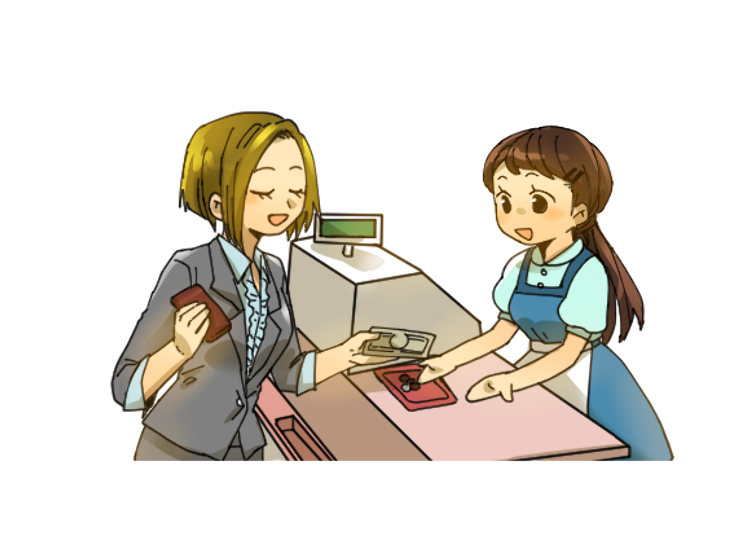
When you think of restaurants in Japan then probably the first kind of places to come to mind might be sushi bars or izakayas (a kind of Japanese pub), and if you aren’t travelling with a family then you might never even think about Japanese family restaurants, or "famiresu." Practically found everywhere, these restaurants don’t necessarily stand out within cities - but you'll love how incredibly convenient they are!
In terms of price, family restaurants tend to be quite reasonable. In many cases, in comparison to say Western prices, they are pretty cheap, yet the quality is really good. As you might gather from their namesake, family restaurants are best-suited to families who are looking for somewhere easy and comfortable to eat, yet with their cheap prices they attract their own fair share of customers, on their own and couples, across all age groups.
They are great for a quick coffee, for a supercheap lunch, or just to meet friends for a relaxed dinner or drink, or even breakfast. They tend to be open long hours, even 24 hours, and have everything you need - from a wide range of drinks to a wide range of food which might include, besides Japanese, Western or Chinese food.
There is nothing that special to dining at a family restaurant, they might just appear a little intimidating as they aren’t quite what you would expect when going out to eat in Japan, but with a tiny bit of guidance you will be happily eating at one in no time.
Getting a Table at a Japanese Family Restaurant

Although advance reservations really aren't required, during peak hours if all of the tables have been taken then there will be a podium by the entrance where you can write your name and how many people are in your group. If you can write in katakana it will help, otherwise just try to keep your name as simple as possible to make it easier for the restaurant staff.
In general the busiest times will be in the evening, and in certain places like Tokyo at around 12pm when many office workers pop in for lunch. As is the case for many Japanese restaurants, regardless of the kind of restaurant, there will be some seating so that you can sit and wait, but sometimes you can step outside or browse their shopping area if they have one. Usually when waiting customers sit to wait they do it in the order that their names are on the list.
Some family restaurants have kiosks with a digital waitlist where you can choose between table and counter seating and smoking and non-smoking sections. These kiosks typically offer multi-language support, so look for this feature before pushing any other buttons on the screen.
When a table is free they will call your name, though they will check whether you want to sit in a smoking or non-smoking area. It is a bit unusual for people from countries where smoking isn’t allowed in a restaurant, and particularly one doesn’t normally think smoking goes together with a ‘family’ restaurant, but as these restaurants attract a wide range of customers it is better to have separate areas then to allow smokers and non-smokers to sit where they like.
On your table you will find everything to be pretty standard, a little box with cutlery and chopsticks, and normally the waiter or waitress will bring over a glass of water and a plastic-wrapped moist towelette called an oshibori for cleaning your hands. There will usually be a variety of menus, big ones and small ones, which can be a tad confusing, so it might take a while to look at everything! The menu will be in Japanese, or Japanese and English, but usually everything on the menu comes along with a picture of the dish that you can point to.
Placing Your Order

This can depend on the restaurant, most commonly there will be a button on the table which you will need to press to call the restaurant staff over, but there is also a good chance that there will be an interactive screen, that may or may not have an English version, which you can use to place your order. If you are really struggling just call the waiting staff over (with a "sumimasen (excuse me)") and point to what you want on the menu.
Entrees can usually be made into “sets,” which include a soup, salad, or both and a drink for an additional fee. Quite often there is a salad and/or drink bar, so you can have as many drinks as you want or as much salad as you want. There may also be teishoku sets, which are Japanese entrees served with a bowl of rice, miso soup, and small sides like Japanese pickles. You can also order menu items tanpin - à la carte.
Typical Menu Options

Menus at Japanese family restaurants offer a wide variety of options, including washoku (Japanese cuisine) and yoshoku (Japanese-style western cuisine), with some chains even specializing in Chinese or Italian cuisine. Menus are typically arranged as follows.
Seasonal Dishes
Japanese cooking is all about featuring seasonal ingredients. Look for dishes made with fresh bamboo shoots in the spring, fruit parfaits in the summer, chestnuts in the fall, and fatty fish in the winter. Because seasonal menu offerings change so frequently, expect these dishes to appear on a separate insert rather than as part of the regular menu.
Appetizers
Appetizers can be a number of different things, and are great for people who are just popping in and want to snack on something, but in general families who come to eat lunch or dinner won’t order an appetizer as so many dishes are offered as a part of a set which includes soup or salad. Appetizers may include, but are not limited to, soup, vegetables, French fries and fried chicken.
Healthy & Light Options
Lighter menu items like dinner salads, tofu dishes, and vegetable-based dishes are usually listed in this section. Dining options for vegans and vegetarians can often be found here as well.
Meat Dishes
You will usually be spoiled for choice in terms of meat, with a wide range of dishes featuring beef, pork, chicken or fish. This might be steak, hamburg (like a hamburger but without the bun and with a special Japanese sauce), fried chicken, beef stew, curry, and more.
Pizza and Pasta
You can expect to find pizza and pasta options available at most Japanese family restaurants specializing in Western cuisine.
Yoshoku
Family restaurants typically serve yoshoku items like hamburg, gratin and doria, a sort of gratin-like dish made with both rice and noodles topped with béchamel sauce and cheese.
Washoku
Japanese options featuring rice dishes like donburi (rice bowls) and noodle dishes like udon and soba can usually be found in this section of the menu.
Kids Menu
Menu options for children typically feature a plate with kid-friendly yoshoku items, including Spaghetti Neapolitan (Japanese-style spaghetti), omuraisu (Japanese-style omelet with rice on the inside), and a hamburger patty, as well as a pudding dessert and an orange-flavored beverage. The plate is typically adorned with cute anime character decorations.
Desserts
Family restaurants are quite popular for their dessert offerings, from towering parfaits to stacks of pancakes topped with whipped cream and ice cream, cakes, and more.
Typical Drink Options

In addition to boasting extensive food menus, family restaurants in Japan typically offer a wide selection of cost-effective beverage options.
Self-Service Drink Bar
For an additional fee, you can have access to unlimited self-serve drinks from the drink bar, which carries items like tea, coffee, juice, and soft drinks. (Japanese kids like mixing drinks, too!)
Soup Bar
While not technically a beverage, the soup bar—like the drink bar—usually offers unlimited self-serve soup. At some restaurants this may only be available at lunchtime.
Wine and Beer
As adults need to relax and enjoy their time, too, most family restaurants have a basic alcohol menu that includes wine and beer.
Paying the Bill at a Japanese Family Restaurant

There will be a running tab of your orders either as a piece of paper on your table, when you are finished you don’t need to call over the waiter or waitress to your table - just take the paper to the cash register at the entrance to the restaurant. Unlike smaller Japanese restaurants, family restaurants typically accept major credit cards. Being Japan, it isn’t necessary to leave a tip, and then it is job done – the bill is paid and you can leave with a full stomach!
- Denny's
- The American diner-style restaurant chain is quite popular in Japan and serves a variety of Western and Japanese foods - from pasta to tonkatsu.
- Gusto
- Gusto offers a casual dining experience with home-style cooked foods like grilled meats, salads and more.
- Saizeriya
- An Italian-themed chain, Saizeriya offers a variety of pastas, pizzas, grilled specials and more.
- Bamiyan
- You can find a variety of favorites - from fried rice dishes to dumplings - at this Chinese-style restaurant chain.
- Bikkuri Donkey
- A restaurant themed like something from the American Midwest, Bikkuri Donkey serves hamburgers, steak and a variety of meats.
- Joyfull
- A chain more commonly found in the western side of Japan, Joyfull offers a variety of meat and fish dishes from the grill.
- Area
- Category
*Prices and options mentioned are subject to change.
*Unless stated otherwise, all prices include tax.
-

23 Quirky and Fun Things to Do in Akihabara
by: Himanshi Shah
-

Ryuguden: Soak in Front of Mount Fuji At This Legendary Hakone Onsen (In-Depth Review)
by: Yoshika Izumi
-

There’s a new museum in Japan, but almost all of its location is a secret
-

Discover Japan Duty Free GINZA: A Unique Shopping Experience in the Heart of Tokyo
by: Chehui Peh
-

Step Into the World of Chiikawa: Immersive 'Chiikawa Park' to Open in Ikebukuro's Sunshine City This July!
-
Ad

Lapoppo Farm, one of Japan's leading makers of sweet potato treats! An in-depth guide to the secrets behind its popularity, including best-selling products and facilities!
Inspiration for Accommodations
-

Enjoy Mt. Fuji from the Comfort of Your Room! Recommended Ryokan with Mt. Fuji View
-

Stay Near the Cherry Blossoms! Hotels for Cherry Blossom Viewing in Tokyo
-

Family-Friendly Hotels with Free Shuttle to Disneyland: Convenient Access for a Magical Stay
-

Top Ranked Hakone Hotels with Mt. Fuji View: Enjoy Stunning Scenery from Your Private Space
-

Convenient Tokyo Hotels with Airport Shuttle: Ideal for Families and Heavy Luggage
-

Stunning Tokyo Tower View Hotels: Enjoy Spectacular Scenery from Your Private Space
-

Convenient Asakusa Hotels with Kitchens: Ideal for Extended Family Visits
-

Experience Luxury: Hakone's 10 Best Five-Star Accommodations
-

Enjoy Mt. Fuji Autumn Leaves! Top Hotels Near the Popular Autumn Leaves Corridor
-

Experience Hakone Fall Foliage from Your Room with Stunning Views
-

Tokyo Train Map: Your Essential Guide to Subways and Railways
-

What to Pack for Japan: 8 Essential Things for a Hassle-Free Trip
-

(Video) Walking Tour along Narita Omotesando - Quaint Historical Village near Narita Airport!
by: Victor Gonzalez
-

JR Edition: Visit all of Tokyo in one Day with the Tokyo Metropolitan District Pass!
-

Tokyo Roppongi|Roppongi Station Area Map & Sightseeing Information
-

Autumn in Japan 2025: Fall Foliage Forecast & Where to Enjoy the Colorful Leaves (+Tour Info)
- #best ramen tokyo
- #what to buy in ameyoko
- #what to bring to japan
- #new years in tokyo
- #best izakaya shinjuku
- #things to do tokyo
- #japanese nail trends
- #what to do in odaiba
- #onsen tattoo friendly tokyo
- #daiso
- #best sushi ginza
- #japanese convenience store snacks
- #best yakiniku shibuya
- #japanese fashion culture
- #best japanese soft drinks




















